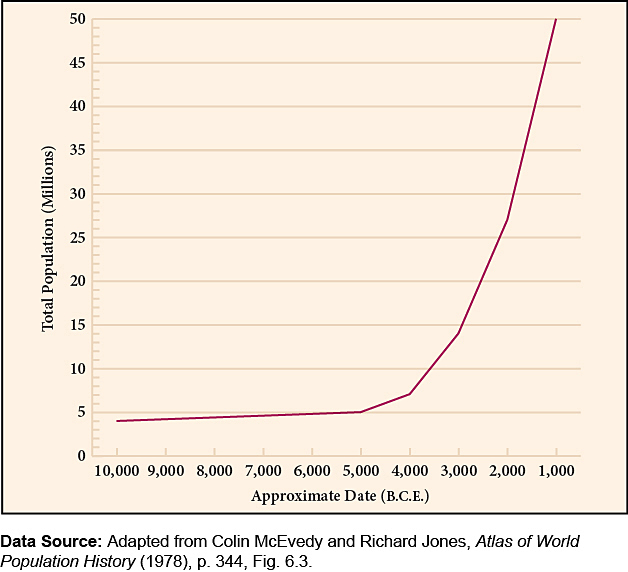Taking Measure: The Rate of Population Growth to 1000 B.C.E.
Printed Page 38
Important EventsModern demographers (scholars who study the nature of and changes in populations) have made estimates of the total number of people inhabiting the world in ancient times. Their estimations are based on a variety of sources of information, from archaeological discoveries to surveys of the resources probably available to support human life in particular regions at particular times. These calculations are necessarily imprecise, given the difficulties of assessing the scanty evidence, and therefore the numbers given are approximations at best. Still, the estimated totals are probably not off by an order of magnitude. The key issue here is to make sense of the changes in the rate postulated for population growth down to 1000 B.C.E. Notice the different degrees of “slope” of the line on the graph at different times:

Question to Consider
Based on the information about the development of civilization in this chapter, which factors could account for the very steep rise in total population estimated to have occurred between 4,000 B.C.E. and 2,000 B.C.E.?